Inside the Glass
How Milk is Made




How To
How To Prepare Milk Powder
How To Read Expiry & Product Details
How To Store Your Milk Pack
How To Keep Milk Fresh
How To Identify Spoiled Milk
Milk Types for Different Ages
Milk Myth
Milk Facts: Debunking the Myths
1. MYTH: Milk is fattening
FACT: Consumption of three to four daily serves of dairy foods like milk, cheese and yoghurt as part of a balanced diet is not linked to weight gain.
Everything we eat contains calories, so it’s our total diet rather than individual foods that contribute to weight gain. The truth is, milk contributes far fewer calories and much less fat, saturated fat and sugars to our diets than many of us think.
2. MYTH: Low fat milk is healthier
FACT: All milk, including both full cream and low fat milk, is considered to be nutritious food.
The health benefits associated with consuming dairy foods are linked to all milk. Low fat milk is not recommended as a drink for children below 2 years of age due to the lower energy content. Similarly, full cream milk may be more appropriate for those who require higher caloric intake due to lifestyle or prefer a creamier taste.
3. MYTH: If you take calcium tablets, you don't need milk
FACT: Experts advice that calcium from natural food sources may be preferable to calcium from supplements.
In addition to being an excellent source of calcium, milk also provides many other essential nutrients including potassium, phosphorus, magnesium, carbohydrate, protein, vitamin A, riboflavin, vitamin B12 and zinc.
4. MYTH: Flavoured milk is unhealthy for kids
FACT: Flavoured milk can play an important role in helping children obtain the nutrients they need as many do not consume enough dairy.
Like regular milk, flavoured milk contains the same essential nutrients as plain milk. Flavoured milk also helps build a healthy habit of drinking milk by providing a variety of taste options.
5. MYTH: Milk contains preservatives (Additives)
FACT: All milk has no preservatives.
The ultra-heat treatment (UHT) kills all bacteria and packaging technology keeps all milk fresh and stable even when unrefrigerated for up to 6 to 12 months.
6. MYTH: Alternative milk drinks like almond are healthier than cow's milk
FACT: In principle, cow’s milk is a better option than almond drink.
Milk is a natural product that contains protein and other nutrients such as calcium, vitamin B2 and B12. Almond drink contains hardly any protein, and often vitamins and minerals have been added.
7. MYTH: Most of us are lactose intolerant
FACT: Research indicates that incidence of lactose intolerance varies dramatically amongst individuals.
A research in Malaysia concluded that while 87% of subjects tested were lactase deficient, only 20% were lactose intolerant. The good news is, even if you are lactose intolerant, you don’t automatically need to stop consuming dairy. Up to 250ml of milk may be well tolerated if it is consumed with other foods or throughout the day.
Milk Types for Different Ages
Milk Myth
Milk Facts: Debunking the Myths
1. MYTH: Milk is fattening
FACT: Consumption of three to four daily serves of dairy foods like milk, cheese and yoghurt as part of a balanced diet is not linked to weight gain.
Everything we eat contains calories, so it’s our total diet rather than individual foods that contribute to weight gain. The truth is, milk contributes far fewer calories and much less fat, saturated fat and sugars to our diets than many of us think.
2. MYTH: Low fat milk is healthier
FACT: All milk, including both full cream and low fat milk, is considered to be nutritious food.
The health benefits associated with consuming dairy foods are linked to all milk. Low fat milk is not recommended as a drink for children below 2 years of age due to the lower energy content. Similarly, full cream milk may be more appropriate for those who require higher caloric intake due to lifestyle or prefer a creamier taste.
3. MYTH: If you take calcium tablets, you don't need milk
FACT: Experts advice that calcium from natural food sources may be preferable to calcium from supplements.
In addition to being an excellent source of calcium, milk also provides many other essential nutrients including potassium, phosphorus, magnesium, carbohydrate, protein, vitamin A, riboflavin, vitamin B12 and zinc.
4. MYTH: Flavoured milk is unhealthy for kids
FACT: Flavoured milk can play an important role in helping children obtain the nutrients they need as many do not consume enough dairy.
Like regular milk, flavoured milk contains the same essential nutrients as plain milk. Flavoured milk also helps build a healthy habit of drinking milk by providing a variety of taste options.
5. MYTH: Milk contains preservatives (Additives)
FACT: All milk has no preservatives. The ultra-heat treatment (UHT) kills all bacteria and packaging technology keeps all milk fresh and stable even when unrefrigerated for up to 6 to 12 months.
Watch this video to learn how milk is treated.
6. MYTH: Alternative milk drinks like almond are healthier than cow's milk
FACT: In principle, cow’s milk is a better option than almond drink.
Milk is a natural product that contains protein and other nutrients such as calcium, vitamin B2 and B12. Almond drink contains hardly any protein, and often vitamins and minerals have been added.
7. MYTH: Most of us are lactose intolerant
FACT: Research indicates that incidence of lactose intolerance varies dramatically amongst individuals.
A research in Malaysia concluded that while 87% of subjects tested were lactase deficient, only 20% were lactose intolerant. The good news is, even if you are lactose intolerant, you don’t automatically need to stop consuming dairy. Up to 250ml of milk may be well tolerated if it is consumed with other foods or throughout the day.